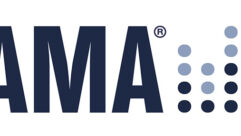
IT Trends: Bits into Bucks
May 1, 2004 12:00 PM,
By Brent Harshbarger
Data is more valuable than money. The ones and zeros that make up data are now the very seeds that cultivate money. It is this increased value of data that has forever changed how it is stored or should be stored.
Consider that companies such as Sony and TimeWarner are now spending a great deal of money digitizing their entire legacy catalogs of analog content. That can include more than a century’s worth of audio, video, and film. Sony’s catalog goes back to the late 1800s, and the company is restoring and digitizing the recorded music of that era. The goal is to make the entire catalog searchable from anywhere and available on demand (for a fee, of course). The content being digitized is intellectual property, which will put money into the pockets of the catalog owners.
Because it is a potential source of profit, a digitalized catalog must be stored safely. You also want it to be accessed freely but not necessarily for free. That means doing more than just throwing your intellectual property onto any old disk. It requires a means of identifying the data stored, referred to as metadata. In addition, there needs to be protection from loss. That could include a loss by mechanical failure or data corruption, theft, and malice.
Just like the general store in the Old West, you have a cash drawer and an inventory. The goal then was to protect those things from the elements, whether that meant fire, rain, or the bad guys. However, the days of the cash drawer and the store inventory being separate items are gone; data is the cash drawer and inventory rolled into one. Today we want everyone who has cash, no matter where they are, to have instant access to our inventory. Proper monetary exchange needs to take place, and the asset must be protected at the same time.

Storage systems require uninterrupted access. Data is growing organically and at an alarming rate, so making the storage efficient requires planning. Inefficient use of space means a business loss, and not enough available space can have the same effect. Theft or malice is a huge form of monetary loss and can be fought both offensively and defensively with proper data security. These concerns can be broken down into three categories for design and deployment: usage and efficiency, availability, and integrity.
USAGE AND EFFICIENCY
Data is a growing and living thing that consumes storage. For example, consider this hypothetical situation: the chief executive officer of a company finds a funny video he wants to share with the 25 people who report to him. He types an e-mail about the video and then attaches the 2 MB Windows Media file and sends it. The 25 people get the e-mail, play the video, and find it amusing. Then they forward the message to the people who report to them. If each of the first 25 recipients had 10 people he or she sent it to, that 2 MB video file has now consumed approximately 0.5 GB of the company’s storage space. A better use of the storage would have been to put the 2 MB video file on the company’s network storage and have a link in the e-mail to stream it. In this example, the executive cost his shareholders money.
AVAILABILITY
Gigabit Ethernet and iSCSI provide the proper infrastructure for storage systems today and in the future. With the move to make storage systems networkcentric, it is now appropriate to call them storage networks. Storage networks come in two types: network attached storage (NAS) or storage area networks (SANs). In basic terms, a NAS is an architecture in which a server connects to the network and communicates through a common file system as a data abstraction layer. In a SANs architecture, the server(s) and the storage are connected to the network using blocks of data that give the server direct access to the storage. Using those blocks of data with SANs allows you to scale easily between local area networks and wide area networks. A SAN can have different file systems and servers accessing the same storage array. It also allows for a higher level of redundancy, which supports availability.
INTEGRITY
Integrity is a broad term when discussing storage networks, because it refers to many things: failure, disaster, recovery, and security. Because data has to be available at all times, equipment can never shut down or fail. Yet that is not realistic, so the technical staff must determine the best method of keeping the system up in the case of a failure. But as the events of 9/11 showed, planning for failure isn’t enough; there has to be a disaster plan, commonly known today as a business continuity plan. If the main business site was permanently disabled because of a disaster, how can the data be kept alive and well? How can you keep the hackers and data thieves out? How can you keep intellectual property from being copied illegally to other digital systems? These are the issues that make up storage network integrity. However, it is not easy to answer these questions with a blanket statement — no one method fits all. Each organization has to determine the amount of risk it is willing to take.
THINK IT THROUGH
Data has become as valuable as gold, and the vault is data storage. That is an especially important issue for media professionals who trade in intellectual property. Storage systems need to be planned with three basic ideas in mind: usage and efficiency, availability, and integrity. The key to effective storage implementation is to create a harmony between the design criteria to meet the customer’s goals.
Brent Harshbargerhas worked for Peavey in the development of MediaMatrix. He can be reached at[email protected].










